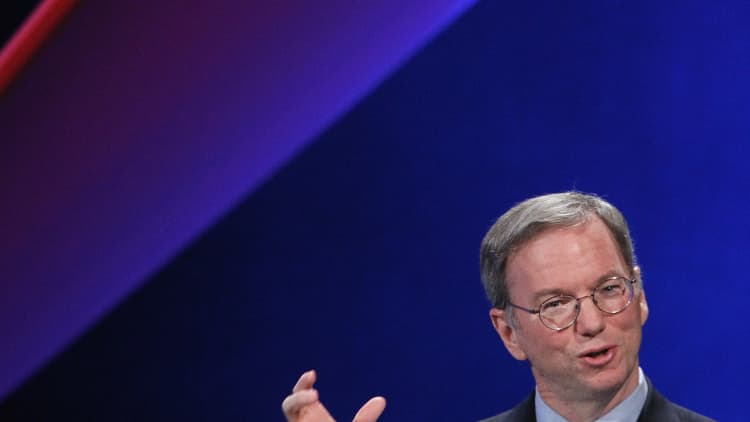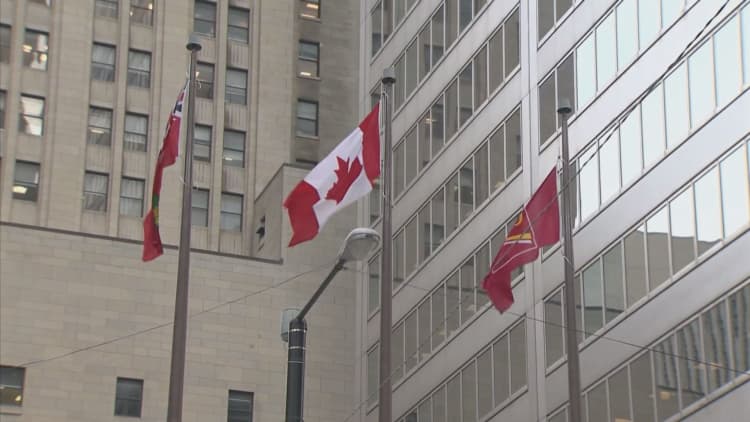The U.S. is famous for over-spending on health care. The nation spent 17.8 percent of its GDP on health care in 2016. Meanwhile, the average spending of 11 high-income countries assessed in a new report published in the Journal of the American Medical Association — Canada, Germany, Australia, the U.K,. Japan, Sweden, France, the Netherlands, Switzerland, Denmark and the U.S. — was only 11.5 percent.
Per capita, the U.S. spent $9,403. That's nearly double what the others spent.
This finding offers a new explanation as to why America's spending is so excessive. According to the researchers at the Harvard Chan School, what sets the U.S. apart may be inflated prices across the board.
In the U.S., they point out, drugs are more expensive. Doctors get paid more. Hospital services and diagnostic tests cost more. And a lot more money goes to planning, regulating and managing medical services at the administrative level.
In other areas, despite conventional wisdom, there seems to be less discrepancy between the U.S. and other countries than commonly thought.
The report challenges popular beliefs about why health care spending is so high
Experts have previously suggested high utilization rates could explain high spending in the U.S. But looking at hospital discharge rates for various procedures, such as knee and hip replacements and different types of heart surgeries, the researchers found that use of care services in the U.S. is not so different compared to other countries.
In fact, compared to the average of all the nations, Americans appear to go to the doctor less often and spend fewer days in the hospital after being admitted.
Think tanks such as the Brookings Institute have suggested that low social spending might also partly be to blame, since funding programs to assist low-income families, the elderly and the disabled would mitigate the demand for medical care. But, again, researchers did not find a substantial difference in U.S. spending on social programs.
The U.S. spends less than average but not by much.

Another popular argument is that the American system has an unnecessarily high number of specialists, who typically earn more than general physicians, and that ramps up spending. But, according to this report, "the ratio of primary care physicians to specialists was similar between the United States and other high-income countries."
"These data suggest that many of the policy efforts in the U.S. have not been truly evidence-based," said author Ashish Jha, a professor of global health and director of the Harvard Global Health Institute, in a press release.
The U.S. has much higher prices across a range of services
The real difference between the American health care system and systems abroad is pricing.
Specialists, nurses and primary care doctors all earn significantly more in the U.S. compared to other countries. General physicians in America made an average of $218,173 in 2016, the report notes, which was double the average of generalists in the other countries, where pay ranged from $86,607 in Sweden to $154,126 in Germany.
Administrative costs, meanwhile, accounted for 8 percent of total national health expenditures in the U.S. For the other countries, they ranged from 1 percent to 3 percent. Health care professionals in America also reported a higher level of "administrative burden." A survey showed that a significant portion of doctors call the time they lose to issues surrounding insurance claims and reporting clinical data a major problem.
As for the drug market, the U.S. spent $1,443 per capita on pharmaceuticals. The average pharmaceutical spending of all 11 countries came to $749 per capita. Switzerland followed closest behind the U.S. at $939.

Individual services cost a lot more, too. In 2013, "the average cost in the U.S. was $75,345 for a coronary artery bypass graft surgery, whereas the costs in the Netherlands and Switzerland were $15,742 and $36,509, respectively," the report states. "Computed tomography was also much higher in the United States, with an average payment of $896 per scan compared with $97 in Canada, $279 in the Netherlands, $432 in Switzerland and $500 in Australia in 2013.
"Similarly, the mean payment for an MRI in the United States was $1,145 compared with $350 in Australia and $461 in the Netherlands."
Higher spending in some areas could make sense. Investing in pharmaceuticals, for instance, is believed to lead to innovation. Indeed, in 2016 "the U.S. accounted for 57 percent of total global production of new chemical entities," the report states.
Still, they conclude, "whether innovation justifies high levels of spending is not clear."
As for salaries, high income may boost performance, and studies have suggested that some countries don't pay their health care professionals enough. What's more, high wages in the U.S. may reflect the time and higher amounts of money American health professionals must invest in their education and training.
"Taking this investment into account, however, does not explain the more than $200,000 difference in compensation observed for physicians between countries," the researchers assert.
Overall, the researchers believe prices in these areas should be analyzed and cut where possible. "As the U.S. continues to struggle with high health-care spending, it is critical that we make progress on curtailing these costs," said author Irene Papanicolas, visiting assistant professor in the Department of Health Policy and Management at Harvard Chan School.
Quality of care isn't that bad, but care still doesn't reach everyone
One of the more notable findings in this report is that, at least in some areas, the quality of health care in the U.S. fared comparably to other countries. Long wait times for treatment, for example, are not as much of an issue for Americans as they are elsewhere. In treating heart attacks and strokes, the U.S. actually had the best record of any country.
So, contrary to past findings, the quality of care may not be much worse in the U.S. than elsewhere. But the nation's was still shown to be the least accessible health care system.

An estimated 22 percent of the population has missed a consultation because they could not afford it, found the report, compared to an average of 11 percent between all eleven countries.
Americans also had the lowest rate of coverage. About 10 percent of the population did not have health insurance in 2016. In the other countries studied, nearly everyone was covered.
The percentage of the population with health insurance has increased since the Affordable Care Act was passed, the report states. "Still, a substantial proportion of people would benefit from coverage but remain uninsured in the U.S., and increasing coverage for these individuals remains a policy priority."
The report sheds new insight on how the U.S. health care system compares to its peers, and the fact that the cost of labor, pharmaceuticals and administrative organization seems to be driving spending. It also points out that, despite that level of spending, too many of its citizens remain uninsured and uncovered.
"As patients, physicians, policy makers, and legislators actively debate the future of the US health system," the researchers urge, "data such as these are needed to inform policy decisions."
Like this story? Like CNBC Make It on Facebook!
Don't miss: Australians may pay more taxes than Americans, but here's what they get for their money

Correction: A previous version of this article misstated how much the U.S. and other countries spend on administrative costs.


